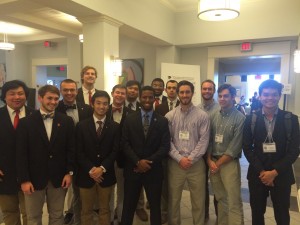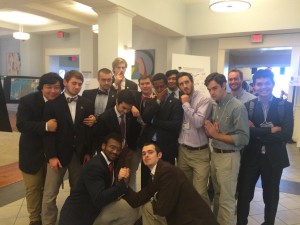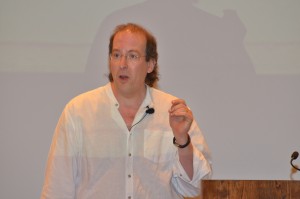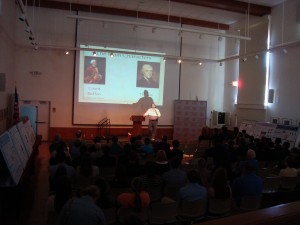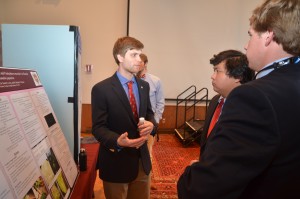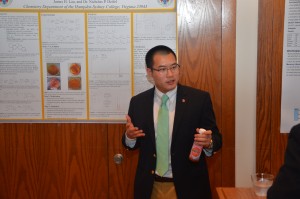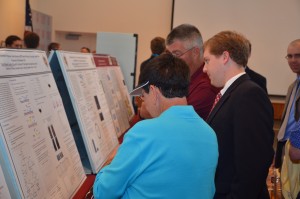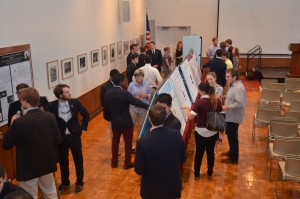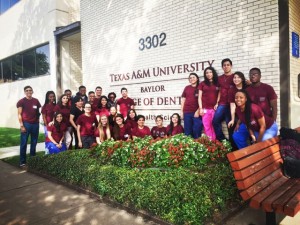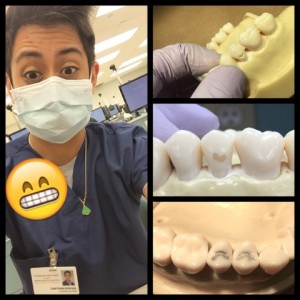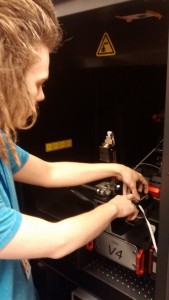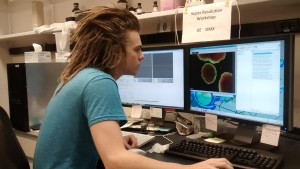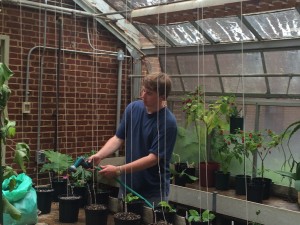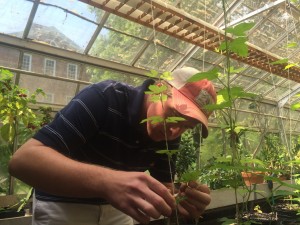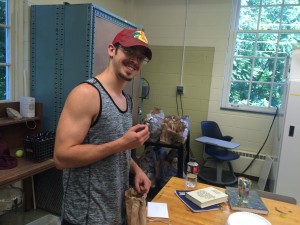Dr. Erin Clabough is a neuroscientist, science writer, and teacher, and is the newest member of the H-SC Biology department. Neuroscience is, by definition, the most interdisciplinary of fields, and as such, Dr Clabough has wide interests in the fields of medicine, basic biology, writing, and psychology.
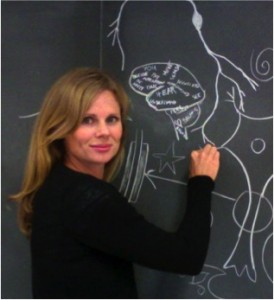
Dr. Clabough
As a graduate student in the Department of Neuroscience at the University of Virginia School of Medicine, she researched Huntington’s disease, a neurodegenerative genetic disorder. After receiving her doctorate in neuroscience and molecular genetics, she worked as a medical writer, covering topics ranging from allergies to cancer to Botox®. Her postdoc position was also at UVa, where she worked with adipose-derived stem cells on a project aiming to reverse damage to the eye due to diabetes.
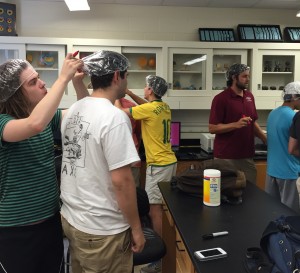
Dr. Clabough’s students prep for classwork in neuroscience
She has been teaching full-time at the college level for several years now, and her research focuses on neurodevelopment. She is interested in research-based active course learning, community outreach, and the science behind effective ways of learning. Her neurobiology class spent this week creating models of neurons, drawing shower cap anatomical brain maps, and designing experiments to better understand the effect that alcohol has on neurons in cultures.
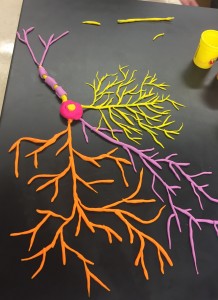
Neuroscience comes to H-SC Biology!
